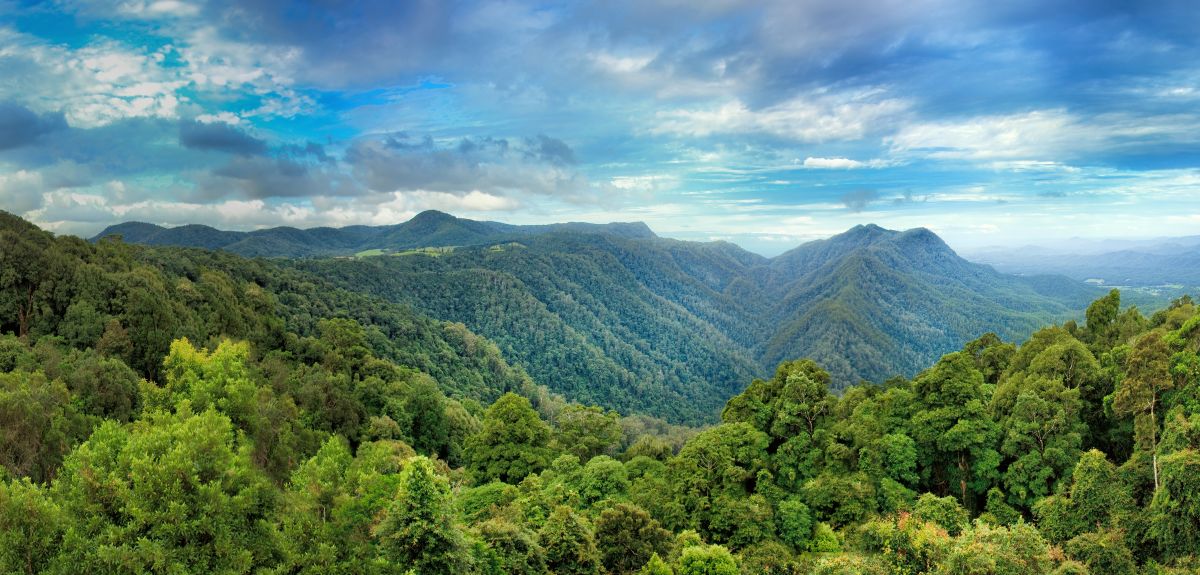
Image credit: Shutterstock
Intact forests ‘indispensable’ in the fight against climate change
Next week, a conference hosted at Oxford will explore the latest research into ‘intact’ forests – large forested areas that remain mostly unharmed by human activity. Co-organiser Dr Alexandra Morel, a postdoctoral researcher in Oxford’s Environmental Change Institute, explains why these threatened landscapes are so important to the future of the planet.
‘Forests are among the most ecologically important landscapes on Earth. Some 1.6 billion people depend on them, and 80% of animals and plants on land live in them. Preserving forests is one of the most cost-effective solutions to mitigating climate change and could help meet 30-50% of the Paris goal of keeping Earth’s temperature rise below 2°C by 2050.
‘In particular, “intact” forests – the large, unbroken swaths of forests whose ecological functions remain unharmed by human activity – provide extraordinary benefits for protecting wildlife, human health, water supplies and indigenous communities. Furthermore, intact forests play a significant role in the fight against climate change, the most pressing environmental threat facing our planet today.
‘Despite these extraordinary benefits, intact forests are disappearing. Since 2000, intact forests have diminished by over 9% – twice the rate of overall forest clearance. If destruction continues at this pace, half of today’s intact forests will be gone by 2100.
‘For the purposes of this conference, we are defining intact forests as forests that are free of significant human-generated degradation, including loss of wildlife. That doesn’t mean a forest must be free of all human presence to be considered intact, but ecosystem science is increasingly showing that forest function is impacted by “edge effects” – the changes that take place at the boundaries between landscapes – and over-hunting. Therefore, significant areas of contiguous forest with minimal human disturbance and a large core area behave differently from smaller areas of forest within a highly fragmented landscape.
‘As for why these landscapes are important, we are keen for this conference to highlight the latest science on this question – specifically with respect to intact forest areas in tropical, temperate and boreal, or northern, regions. Some of the key values that are derived from a forest’s intactness relate to its ability to store and sequester carbon, its resilience to fire, local to regional climate regulation, watershed protection, and the ability to protect local communities from animal-borne diseases.
‘Threats to forest landscapes are manifold, primarily because their protection has not been made an international priority due to the focus on the current hotspots of deforestation and forest degradation. The fact that intact forest areas remain that way is due to their not previously being under direct threat. However, like other forest areas, intact forests are suffering hunting pressure, selective logging, mining and clearance for commodity production, which has significantly reduced their total area since 2000.
‘A multi-pronged approach will be necessary to mitigate these threats. Our conference sessions have been organised around some large topics, such as attempting to maintain intactness in logged forests, the relevance of international policies and financial instruments in incentivising intactness, and the effectiveness of protected areas, including indigenous reserves, for maintaining intact forest area. The fundamental responsibility to protect these areas lies with national and sub-national governments – however, it is increasingly recognised that these actors need additional support, both technical and financial, to achieve adequate protection of intact forests.’
The ‘Intact Forests in the 21st Century’ conference will be held in Oxford from 18-20 June.